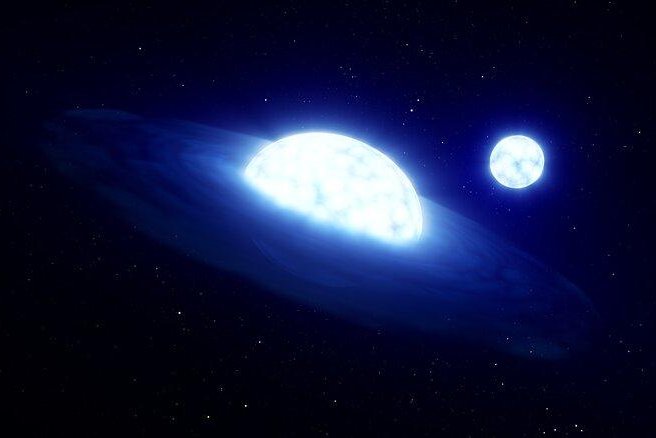Phenomenon thought to be closest black hole is actually a 'stellar vampire'
MARCH 2, 2022 / 6:59 PM
By Calley Hair

New research indicates that HR 6819, previously believed to be a triple system with a black
hole, is in fact a system of two stars with no black hole. This artist’s impression shows what
the system might look like; it’s composed of a "vampire" star with a disc around it in the
foreground and star that has been stripped of its atmosphere in the background.
Illustration by L. Calçada/ESO
March 2 (UPI) -- Astronomers on Wednesday announced new findings indicating that an interstellar system 1,000 light years away from Earth does not actually include a black hole, a reversal of a previous observation.
If it did exist, the black hole in the HR 6819 system located in the constellation Telescopium would have been the closest to Earth. When a team of researchers examined the movement of two stars in 2020, the first star orbited the second while the second star moved in a wider orbit. They believed there had to be a black hole at the center to explain the pattern.
But astronomers now say it's a case of mistaken identity. The stars' movement is the result of a common but short-lived phenomenon called "stellar vampirism." One star is stripping away and absorbing mass from the other, according to the study published Wednesday in Astronomy & Astrophysics.
The debunking team included the scientist who thought he discovered the black hole two years ago, European Southern Observatory astronomer Thomas Rivinius, as well as ESO fellow Julia Bodensteiner and Abigail Frost of Belgian university KU Leuven.
More:
https://www.upi.com/Science_News/2022/03/02/Chile-black-hole-actually-stellar-vampire/7251646259450/
